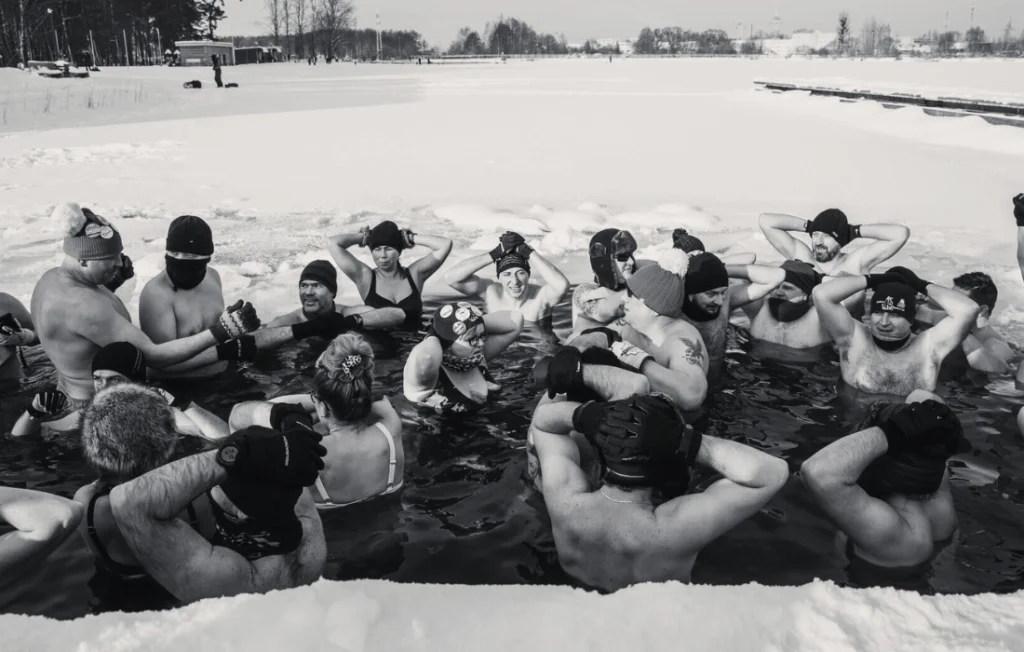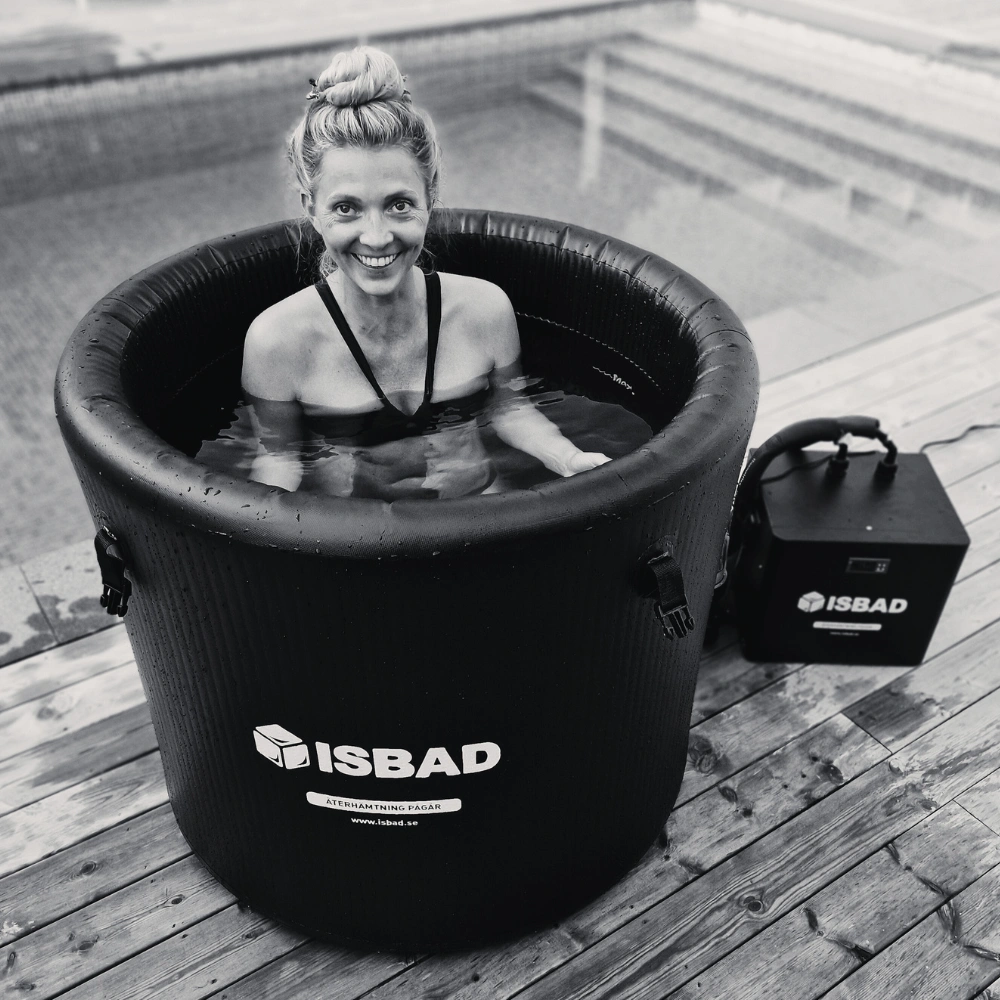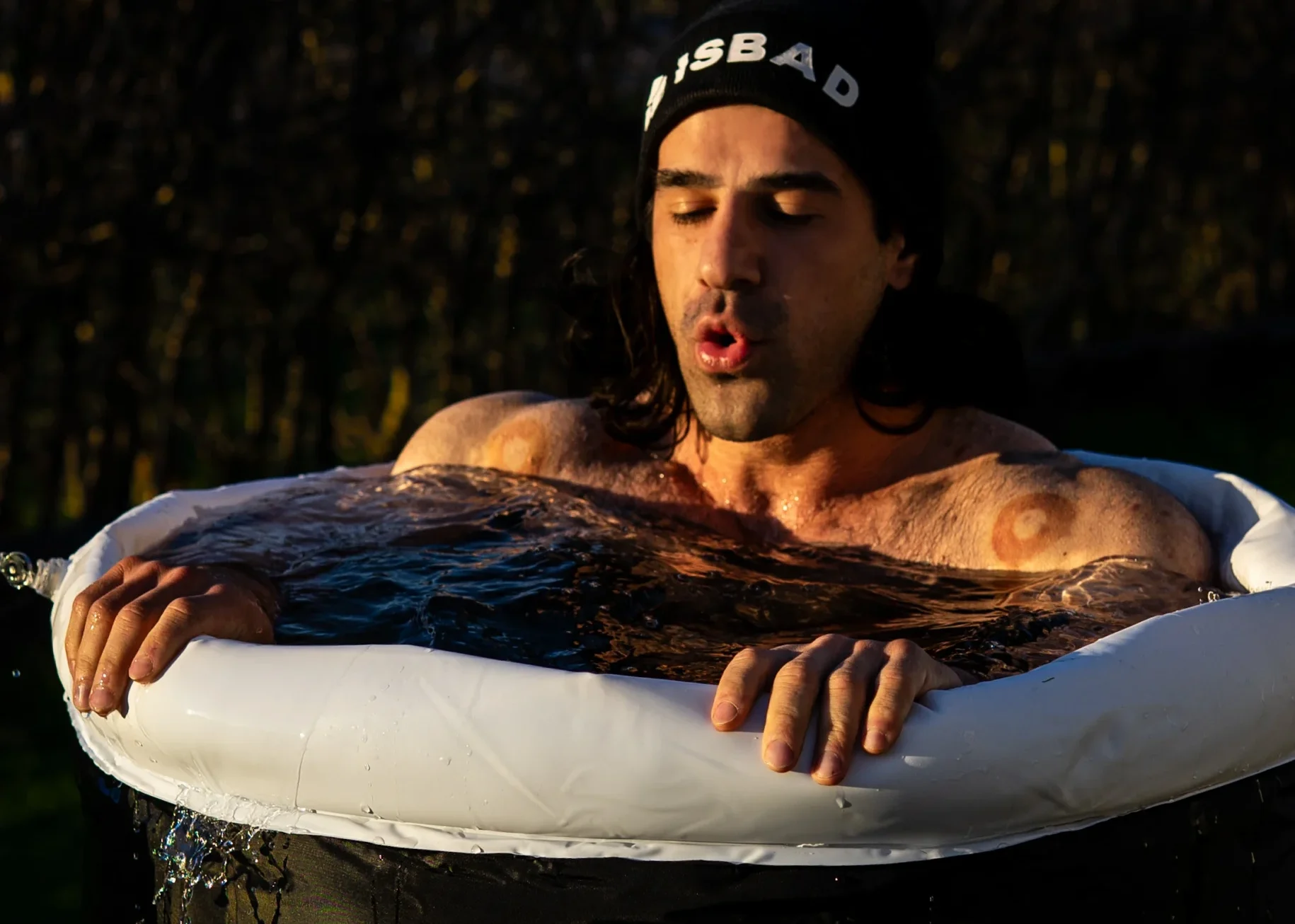A ice bath involves immersing the body in cold water, usually between 10-15 °C, for 10-15 minutes after exercise. The aim is to reduce inflammation, relieve exercise pain and speed up recovery.
Ice bathing and recovery: what happens in the body?
After intense exercise, microscopic damage occurs in the muscles, leading to inflammation and soreness, often called delayed onset muscle soreness (DOMS). By immersing the body in cold water, usually between 10-15°C. blood vessels constrict, reducing blood flow to the strained muscles. This can help to reduce swelling and inflammation. The body warms up again after the bath, increasing blood circulation. This speeds up healing and provides oxygen and nutrients to the muscles.
Benefits and limitations
Several studies indicate that ice baths can reduce muscle inflammation and soreness after intense exercise. In addition, the cold water reduces blood flow in the parts of the body that you immerse, which in turn can dampen inflammation and therefore help the body recover faster. On the other hand, it's important to note that some researchers claim that ice bath cooling can also negatively affect recovery, especially when it comes to muscle building. For example, a study from the Karolinska Institute showed that a higher muscle temperature leads to a faster rebuilding of glycogen, which can ultimately improve endurance.
Mental impact and immune system
In addition to the physical effects, ice baths can also affect mental well-being. Exposure to cold water can stimulate the production of dopamine and noradrenaline, which can improve mood and reduce stress. In addition, regular exposure to cold has been shown to increase white blood cell counts. This strengthens the body's defenses against infections.
Practical advice for ice baths
If you are a beginner, you can start with a water temperature of 12-15°C and stay in the bath for 5-10 minutes. It is important to listen to your body and gradually get used to the cold. Having a friend present during the first few times can be both reassuring and motivating. For those who want to integrate ice bathing into their exercise routine, it is best to bathe 2-3 times a week, preferably right after hard workouts.
Conclusion
Ice bath can be an effective tool to reduce muscle soreness and speed up recovery after exercise. However, it is important to adapt its use according to individual needs and goals. For those focusing on muscle building, it may be worth considering other recovery methods. As with all exercise methods, ice baths should be used with awareness and in consultation with health– or training staff.











